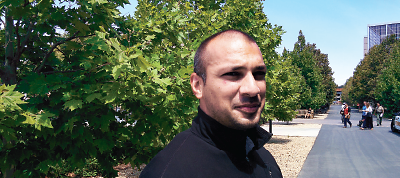One of the difficulties in psychiatric research is the lack of reliable animal models to help identify the molecular underpinnings of mental illnesses or test potential new drugs. Undoubtedly, the unique features of the human mind will serve to maintain some gap between animal-based results and human applicability. Two recently developed rodent models, however, replicate some well-known observations in humans and could prove valuable in understanding drug addiction or chronic pain.
The breakthrough in the latter, which was published in the August 1 Science, came courtesy of the lab of Robert Malenka, M.D., Ph.D., the Nancy Friend Pritzker Professor in Psychiatry and Behavioral Sciences at Stanford University. In people, chronic pain is closely intertwined with decreased motivation to carry out tasks, but how these two features relate physiologically is unknown; existing models of chronic pain have not been able to tease out chronic affective behavioral differences in mice.
Neil Schwartz, Ph.D., a postdoctoral fellow in Malenka’s lab and lead author of this new study, managed exactly that with the help of a progressive ratio test; mice were trained to poke their noses in a small port to receive a chocolate pellet, though each successive pellet required progressively more pokes. Healthy mice averaged about 200 pokes a day, but if they were given either chronic inflammation or damage to the sensory branches of the sciatic nerve, their daily nose pokes dropped by about 40 percent after a week. “We found it wasn’t a lack of appetite, less fondness for sweets, or trouble moving; mice with chronic pain just did not want to work as hard for the reward, even when treated with acute analgesics,” Schwartz said.
With the behavior established, follow-up work showed that these mice had changes to a set of neurons in the nucleus accumbens, the brain’s motivation center, and that these circuitry changes were mediated by a protein called galanin.
Excess Desire Also Modeled
Motivation was also the theme for rats in a study carried out by Gary Aston-Jones, Ph.D., and his team at the Medical University of South Carolina Department of Neuroscience. Their aim was to develop a model of addiction behavior in rodents based on economics.
Demand—how much someone is willing to pay for a drug under different scenarios—has been found in human tests as a reliable predictor of addiction severity; a similar model of economic demand in rats could be a tool to screen potential addiction drugs.
Of course, one cannot simply provide rats with a small briefcase of cash, so the researchers also turned to a progressively challenging task. Over a roughly two-hour session, rats would receive a dose of cocaine every time they pressed a lever; the initial dose would be potent, then would decrease at 10-minute intervals, requiring more presses to reach the desired high.
Their study was published online July 28 in Proceedings of the National Academy of Sciences.
Elasticity Predicts Addiction Phenotypes
“What we saw was that baseline demand, or how much the rat would consume when cocaine was essentially free, was completely independent from demand elasticity, or how much demand dropped as effort increased,” Aston-Jones said. “Elasticity, though, proved to be a solid predictor of different addiction phenotypes, such as the tendency to relapse or compulsive drug taking when faced with an electric shock; it also could predict how well oxytocin, a promising antiaddiction treatment, could curb the desire.”
That last finding might pique the most interest, as both the observed correlation between economic demand and addiction in humans, and the short time needed to generate data, suggest that this rodent model could be used to rapidly screen potential addiction therapies. Malenka’s study also has therapeutic implications, as the motivational defects brought on by chronic pain could be tempered by blocking the galanin-mediated pathway.
Clinical viability is still a long way off, though, but both research groups will continue pushing knowledge forward in the meantime. Aston-Jones’ team is testing the economic formula on other addictive agents, including opioids and food, while also undertaking some electrophysiology studies to see how the brain responds to demand elasticity.
Malenka’s lab is looking more closely at their two pain models to see if they produce any differences at the neuronal level.
Both studies were supported by grants from the National Institutes of Health; Schwartz also received funding from a Banting postdoctoral fellowship. ■
An abstract of “Decreased Motivation During Chronic Pain Requires Long-Term Depression in the Nucleus Accumbens” can be accessed
here; an abstract of “Economic Demand Predicts Addiction-like Behavior and Therapeutic Efficacy of Oxytocin in the Rat” can be accessed
here.


